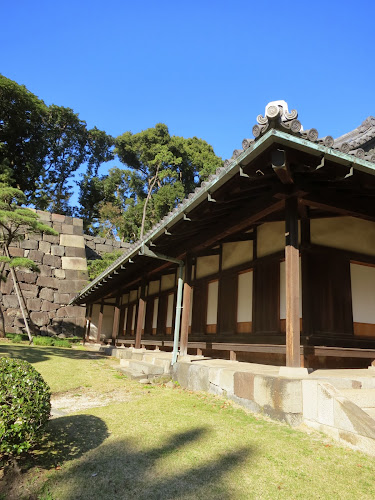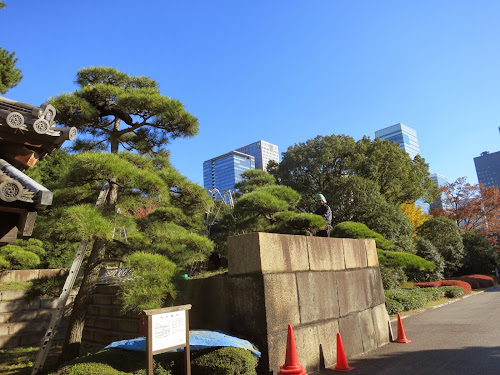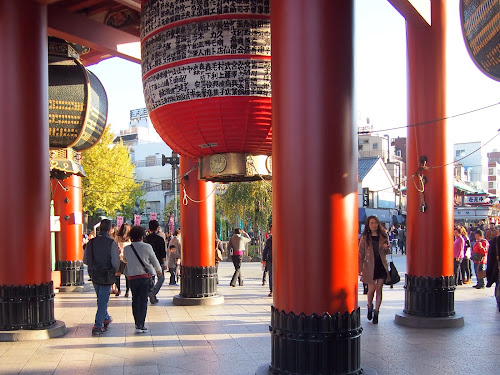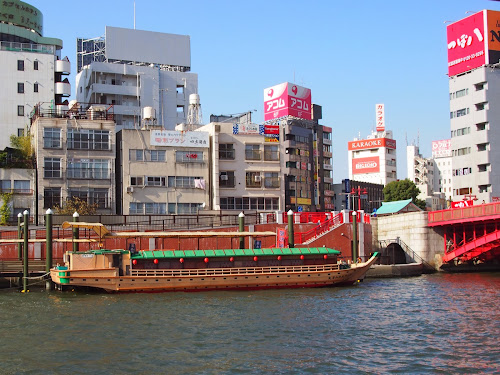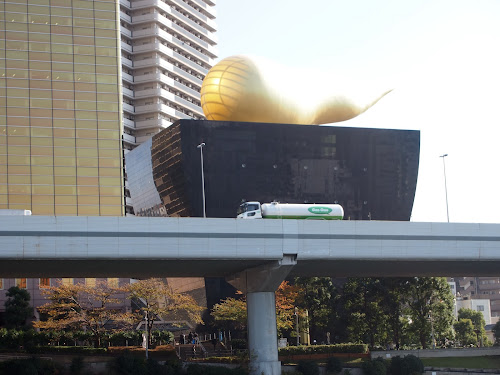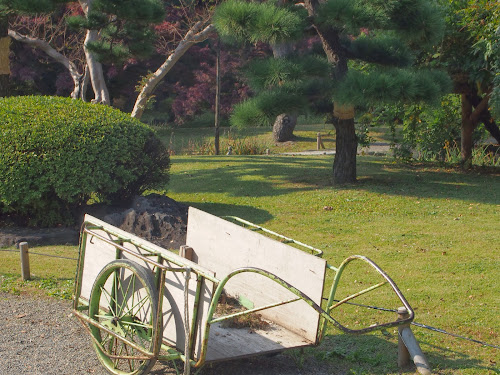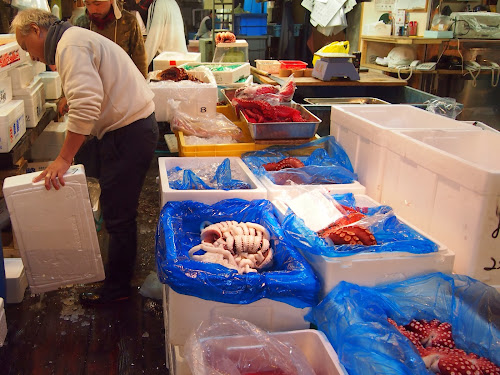Our apologies for falling so far behind in keeping our blog postings current! But, alas, our time here is beginning to grow short and we will begin to catch up. Kyoto and Osaka, two of Japan’s largest cities, seem to form one enormous metropolitan area that is held together by lots of rail systems. For our first day out and about, we decided to tackle Osaka with a guide.
Month: November 2013
Taking the Shinkansen to Kyoto
There’s a reason they’re called bullet trains. The Nozomi Express Shinkansen train we took from bustling Tokyo station left precisely on time and tore down the track at something over 150 mph. We’ve never had a train ride quite as smooth. It certainly is a great way to travel.
We were fortunate to have gotten seats on the side of the train allowing views of Mount Fuji. It looms out of the landscape all by itself. Hard to miss.
We think of Kyoto as a quaint small town. In reality, it is a very large and modern city and the main train station reflects that.
According to plan, we spent some time at Higashi Hongan-ji Temple (a short walk from the station). It’s the “Eastern Temple of the True Vow.” Much of it was undergoing renovation, but it was a nice introduction to Kyoto.
The Imperial Palace
Guest post by Ken:
On the morning of our journey South, I ventured off to explore on my own. I began the day by braving rush hour traffic and taking the subway to Marunouchi, the center of Tokyo. After arriving at the station, I walked to the “East Gardens of the Imperial Palace”. After waiting a few minutes at the Ote-mon Gate, the gardens opened. These gardens are free and open to the public, but government employees also work on the grounds at various cultural centers.
Ote-mon Gate, the main entrance to the East Gardens of the Imperial Palace.
After seeing various guardhouses, moats, and imposing walls, I discovered just how the pine trees achieve their beautiful shaping. Each year, groundskeepers prune every tree, mostly by hand. This requires them to climb ladders and sometimes scale the tree limbs.
See if you can spot someone in the tree at top left.
After walking through the gardens, I headed towards the palace gates. The guard was changing as I arrived, and it reminded me of a trip to London many years ago. This complex is not open to the public, but it is still beautiful to view from the outside.
(L to R) Fujimi-yagura Keep from the other side, Kiyo-mon Gate, and Tatsumi-yagura Keep.
The perfectly groomed trees of the Imperial Palace Plaza (Kokyogaien).
The changing of the guard.
Sei Gate to the Imperial Palace in the foreground with Fushimi-yagura Keep in the background.
Asakusa, Sensoji & the Shoguns
Within twenty years of the discovery of the statue of the Boddhivista Kannon in the Sumida River, a Buddhist priest established a temple to shield it from human eyes in 645 (Tokyo’s oldest). This was the foundation of Asakusa as an important village. When the Tokugawa clan moved the capital to Tokyo at the beginning of the Edo period, Sensoji temple was where prayers for the success of their shogunate were offered. Today it draws tremendous crowds. The crowds are overwhelmingly Japanese tourists. We caught ourselves staring at other Westerners, just like everyone else.
Countless shops crowd the neighborhood (which could be said of most neighborhoods in Japan). A mobile hot spot helped us to navigate, but meager language skills made finding a meal our biggest challenge. In Asakusa, we ate at a little restaurant by pointing at pictures posted outside the door.
There are many statues of Japanese raccoon dogs, or tanuki, like these in Asakusa near the Sensoji temple. To us, they are somewhere between cute and weird! These particular Tanuki were put here at Shingodo Shrine as an appeal to Shingodo, the raccoon dog guardian against theft and fire when there were some theft issues around the temple.
You have to hand it to those Japanese marketers at KFC. They’ve convinced a lot of people that Americans eat fried chicken for Christmas. So, KFC stores sport signs saying how many boxes of chicken remain to be reserved for Christmas (so, hurry up and place your order!).
Up the Sumida River to Asakusa
The best way to get from the waterfront Ginza of Tsukiji and Hama-Rikyu to Asakusa is by boat up the Sumida River. The Sumida is straddled by no fewer than 26 bridges as it courses through Tokyo. You pass one of the business ends of the fish market, flood gates, lots of bridges and working vessels coming in and out of Tokyo Bay. You know you’re in Asakusa when you see the Asahi beer building with its squiggly top. Legend has it that two fishermen pulled a statue of the goddess of mercy – Kannon – out of the Sumida River in 628. It kept returning to them even though they repeatedly put it back in the river. So, the Sensoji Temple was founded in Asakusa as a home for the statue of Kannon.
Hama-Rikyu Gardens
A short walk from the fish market is an Edo period garden centered on tidal ponds used for duck hunting and as a relaxing retreat for the Tokugawa shoguns. Today the surrounding cityscape provides a striking contrast to the natural beauty of the garden. Of course, that natural beauty is painstakingly maintained by gardeners who pinch new growth to create a pleasing shape to the black pine and other trees.
Tsukiji Fish Market
You can smell fish while you are still underground walking towards the exit of the subway system. It’s not an unpleasant smell, but it’s definitely there. Then you have arrived and it is enormous. A vast marketplace. We arrived after the morning auction and tried very hard to stay out of the way of all of the bustle as orders were fulfilled and dispatched. Motorbikes stood at the ready or were whizzing past us.
It all seemed like the setting for a James Bond chase scene. We understand there are plans to move this market. Perhaps it will be a bit less accessible to us tourists. That would be a shame, although we had to be very alert to avoid the motorbikes, bicycles, cargo movers, buckets of water being dumped on the floor, hoses gushing out to wash down the floor and thousands of workers scurrying about.
A Neighborhood Spared
Yanaka was little touched by the 1923 earthquake or war, so it remains a Tokyo neighborhood of small houses and unexpected twists and turns.
Journey to Japan
Having risen early on a Thursday to start our journey, we approached Honshu island and Tokyo’s Narita airport directly into a fiery Friday sunset, advancing fourteen hours into the future.
People wash their hands and rinse out their mouths before proceeding to the shrine for prayer.
Prayers can be offered with the help of ema or votive tablets.
Journey to Japan
Having risen early on a Thursday to start our journey, we approached Honshu island and Tokyo’s Narita airport directly into a fiery Friday sunset, advancing fourteen hours into the future.
People wash their hands and rinse out their mouths before proceeding to the shrine for prayer.
Prayers can be offered with the help of ema or votive tablets.




















